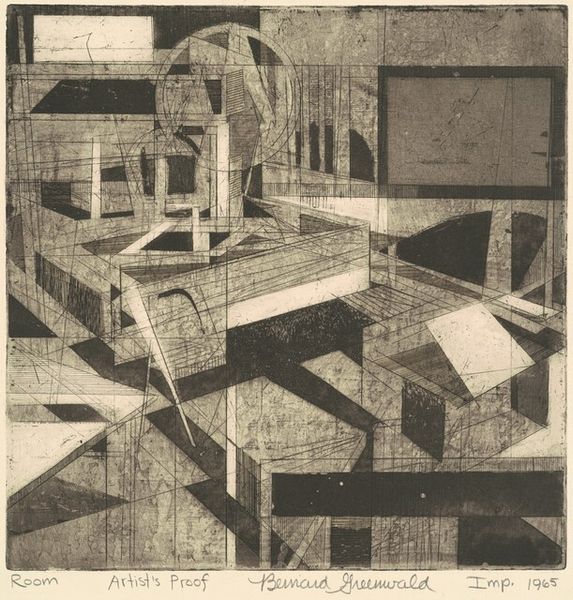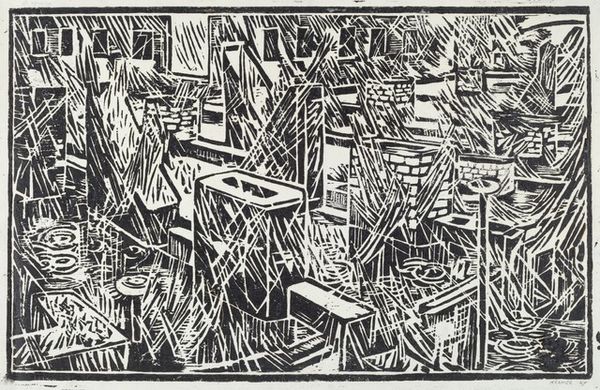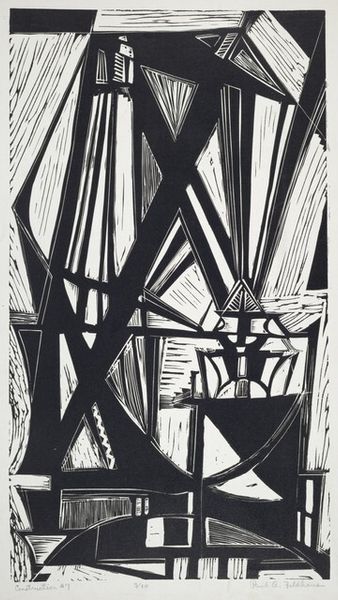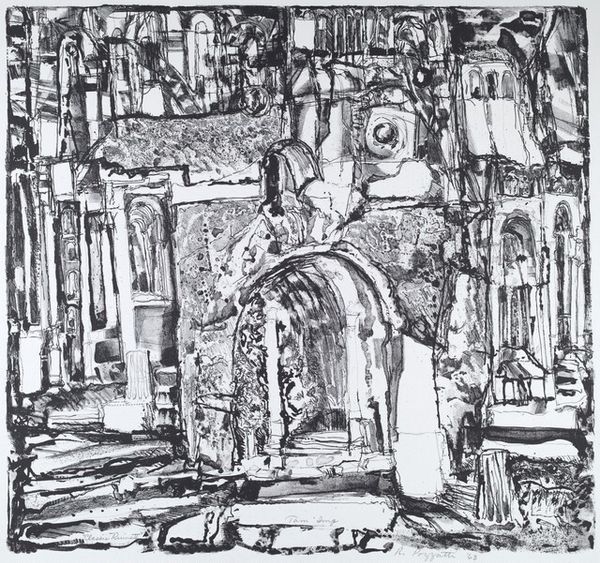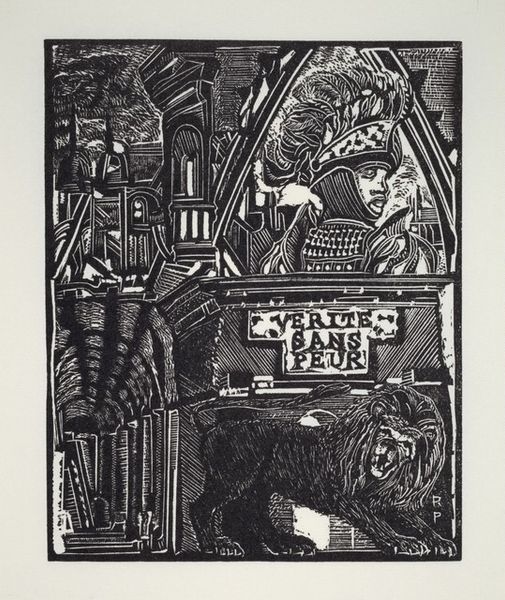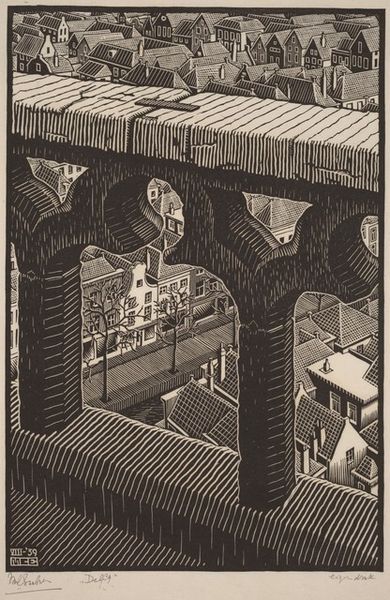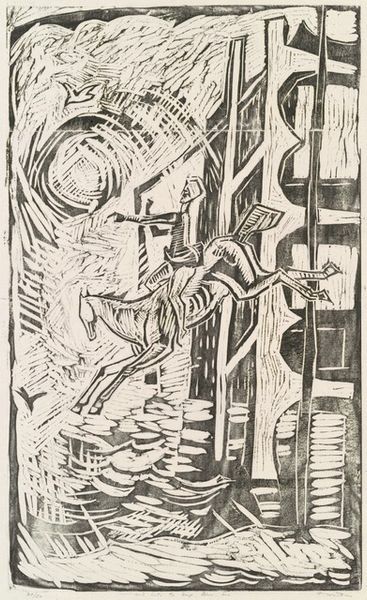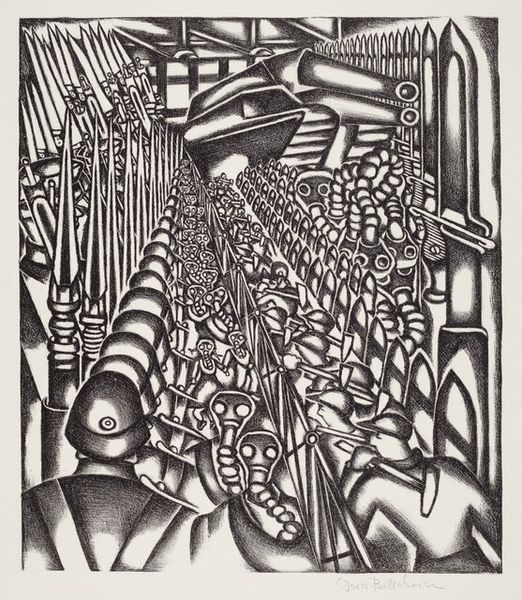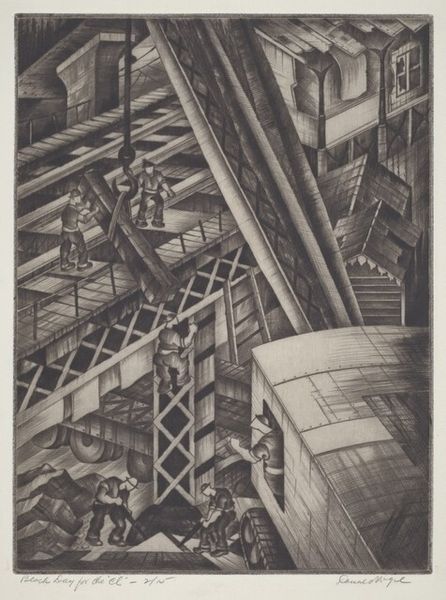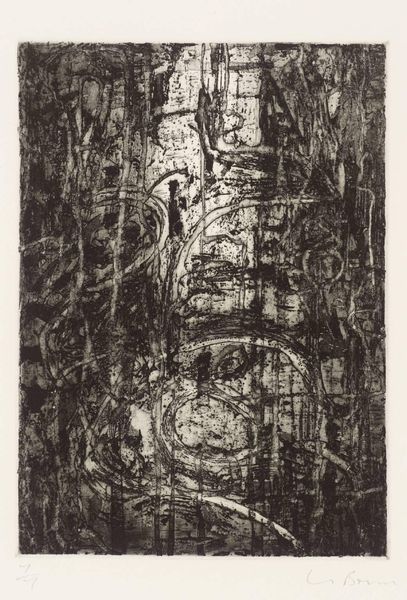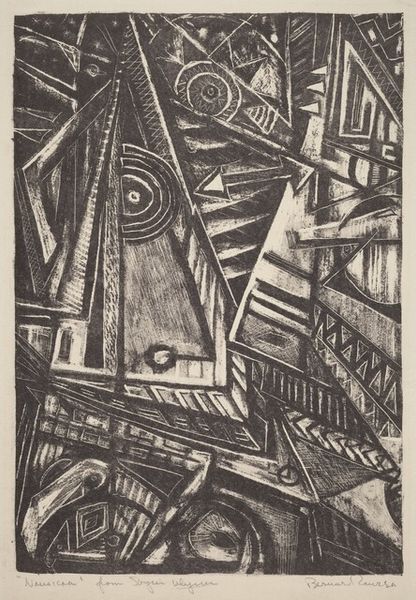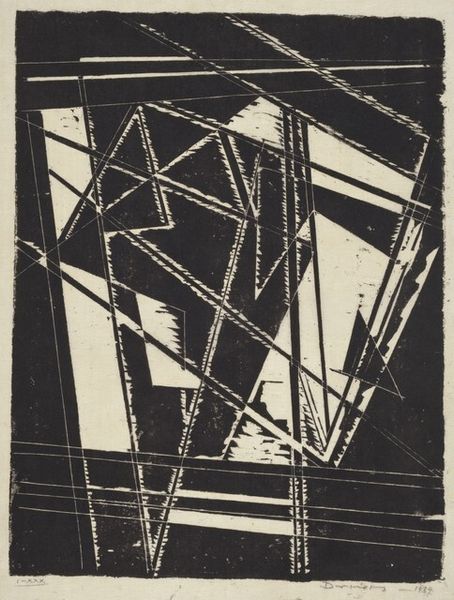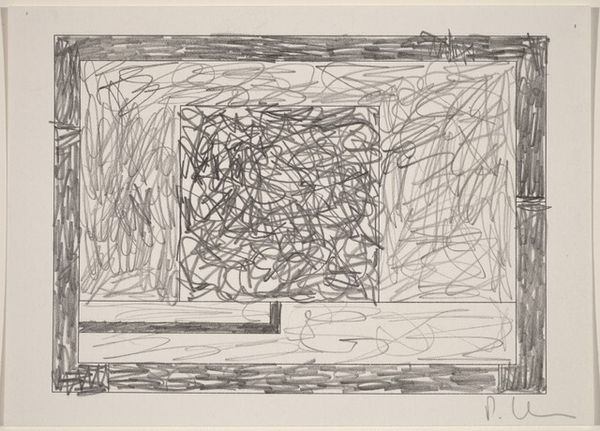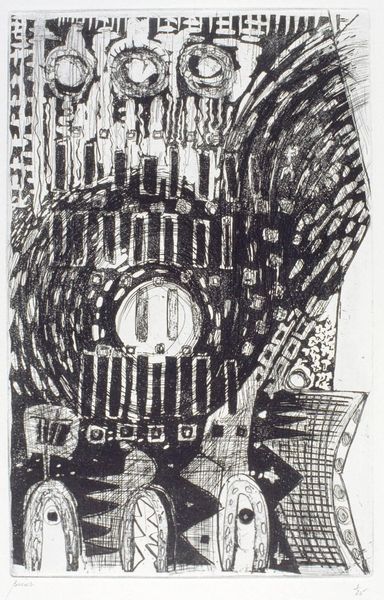
print, woodcut
# print
#
geometric
#
woodcut
#
cityscape
Dimensions: block: 493 x 377 mm sheet: 531 x 449 mm
Copyright: National Gallery of Art: CC0 1.0
Editor: Here we have Edith Kramer’s “Untitled (34th Street and 6th Avenue Station)” created in 1947 using woodcut printmaking. The bold contrasts immediately strike me as isolating, a visual maze of the city. What do you make of it? Curator: This piece really captures the urban experience post-war. Consider the historical context: The war ended only two years prior. The image of the city here isn’t glamorous. Kramer chooses a subway station, a public space, but renders it as a site of almost oppressive geometry. It is almost a statement about modern alienation amid the purported progress. Does the rigidness convey a social commentary? Editor: It certainly feels more critical than celebratory. I hadn't considered the immediate postwar atmosphere. There's a distance between the viewer and the people depicted that is pretty stark, though there appear to be figures moving around this subterranean world. Curator: Absolutely. Think about the distribution and consumption of art like this. Woodcuts were relatively accessible; they weren't paintings for the elite. Kramer perhaps aims to depict and critique the experience of a broader public, representing a layered perspective. Does knowing it was created by a female artist in the 40's shift how you view this composition at all? Editor: Yes, in that light, it feels like a glimpse into an under-represented viewpoint of everyday life, perhaps questioning who has the right to portray urban experience. I'll look at woodcut differently going forward! Curator: Exactly, understanding its cultural context gives "Untitled (34th Street and 6th Avenue Station)" an unexpected voice within post-war American printmaking. I'm glad we looked at that today!
Comments
No comments
Be the first to comment and join the conversation on the ultimate creative platform.
